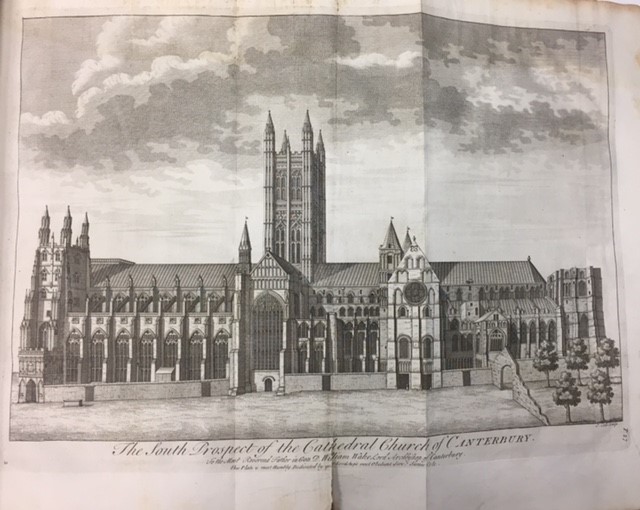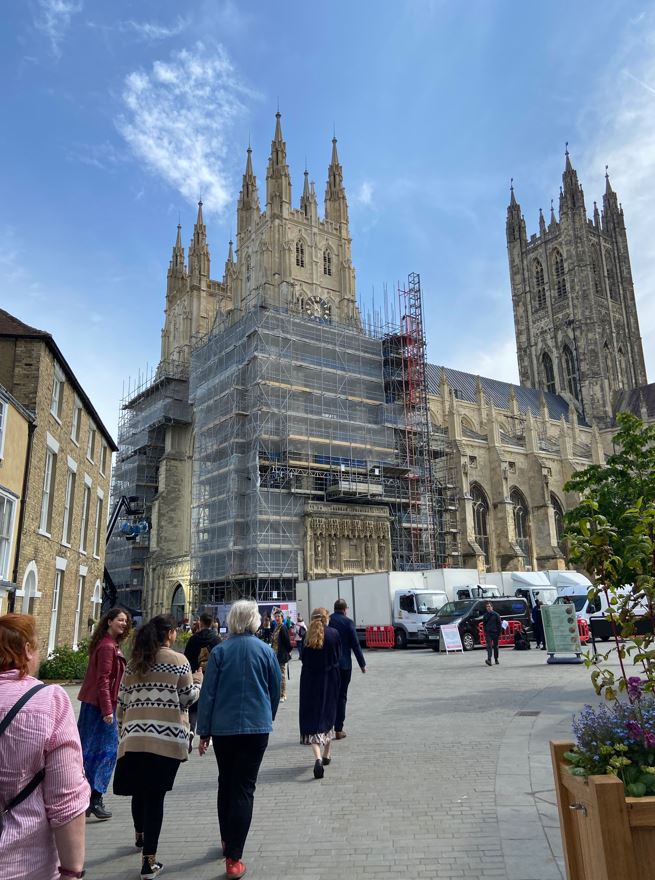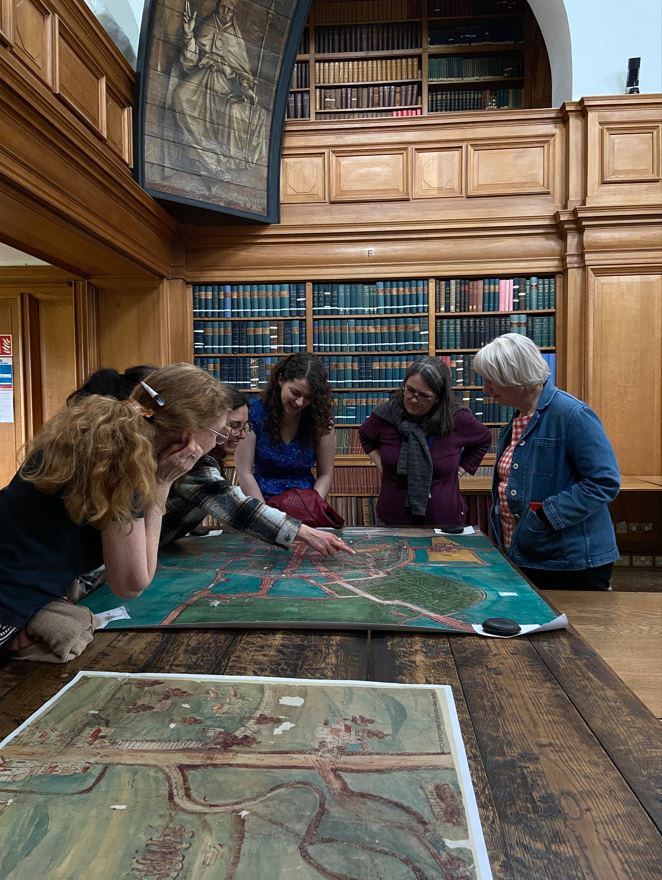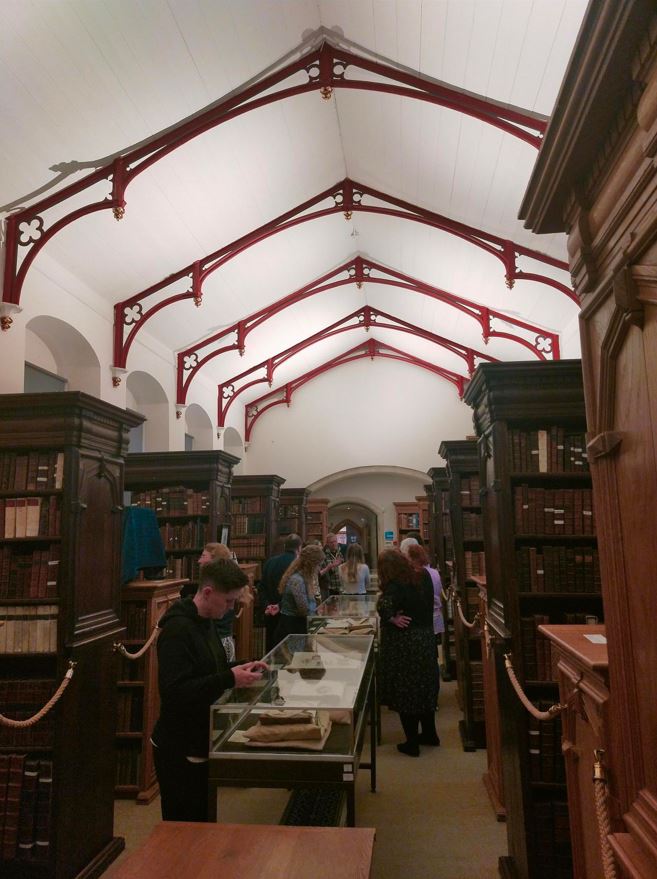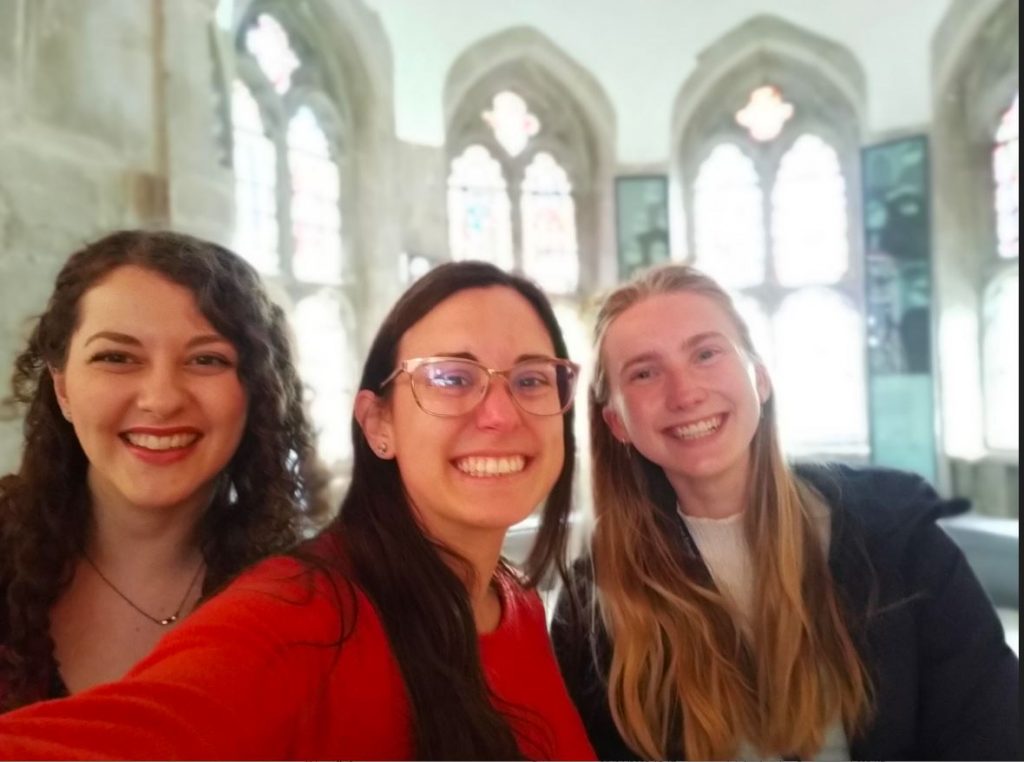On Tuesday the CCCU Library Archives Working Group visited Canterbury Cathedral Archives and Library to find out more about archival practice in the city. In this blog post we’ll be sharing what we discovered.
Isabel’s Story
I loved visiting the gorgeous library, learning about the history of the buildings and listening and talking to Cressida and Fawn, the lovely archivist and librarian who showed us around.
It was amazing to see old documents up close such as the Anglo-Saxon land contract and the XVIII century copy of the Magna Carta.
We learned that the archive at Canterbury Cathedral is the oldest continuous archive in the country, even though the buildings where the collections are housed have changed and evolved hugely throughout the years; and that the archives employ an in-house book conservator and binder, allowing for important conservation work to happen in situ.
I especially liked the Victorian Howley-Harrison library. It has beautiful bespoke wooden shelves. There were some very interesting items on display in the library, such as a XVII century pamphlet describing the Christmas riot of 1647 (also known as the Plum Pudding Riots) when the Puritans tried to ban Christmas.
Irene’s Story
We saw some spectacularly old charters, huge volumes written up in Old English and in beautifully intricate handwriting.
There is an an amazing engraving of the Magna Carta produced by publisher and map seller John Pine in 1733. It was purchased by the cathedral in 2017 to celebrate Canterbury’s important links with the original charter. Canterbury may have played a key role in the creation of the charter as Stephen Langton, the archbishop in 1215, was a negotiator and probably helped draw up its terms. Canterbury originally had its own copy of the Magna Carta which was held at the Cathedral until 1630, when Sir Edward Dering, Constable of Dover Castle, sent it to Sir Robert Cotton. It now resides in the British Library and is one of two copies there and only one of four surviving in the country as a whole. You can read about it here.
I particularly enjoyed browsing the bookshelves in the Howley-Harrison Library. These books were once part of the private collections of Archbishop William Howley and Benjamin Harrison, who was the Archdeacon of Maidstone. You would expect this mainly to be made up of theological treatises and spiritual texts but it was actually a very varied collection. There were gardening books, a series all about Cook’s voyages and works on physiognomy.
Having experienced many reading rooms, this one has a wonderful stillness and aura about it. It is an amazing location in which to explore local history – Gaynor
Jane’s Story
I learned that the cathedral collections aren’t just about theology! I liked the fact that they act as a memory of the city and surrounding area. It is open to everyone by appointment or for enquiries and their ‘bread and butter’ work is people researching their family history.
The staff had organised a fantastically varied display of material for us, from a Canterbury map with beautifully drawn ‘collapsed’ buildings lying flat on each side of the streets, a Saxon dictionary written in a clear hand by seventeenth century antiquarian scholar William Somner – open at the page on Oak apples or galls.
The horticulture books in the Howley Harrison Library were beautiful to look at with a lovely example of marginalia on the dangers of planting rosemary close to your fruit trees.
I thought the display of gardening and horticultural books was beautiful, from the hand-painted plates to the marginalia – Nick
Gaynor’s Story
I really enjoyed listening to Cressida talk about the fascinating history of the archive as she is so knowledgeable. I saw cartularies, which contain important title deeds which are used by local historians and scholars, and even spotted a collection of material from the parish where I live.
Cressida told us about some really exciting digitization projects and collaborations with the School of Humanities and Education at CCCU, including Ralph Norman’s project Global Canterbury. You can read more about his research here or watch this YouTube video.
And me?
Well, there had to be one person who asked how the library was classified, after all we do like library things, and the answer is:
The Howley-Harrison collection has a very strange thematic order and there isn’t really a solid thematic classification order as we would formally arrange it today. The books are organised by their shelf positions instead.
When it was a private library, Harrison arranged his books by rough thematic groupings which were probably confused in parts when the collection was moved from his home and brought to the new space in 1887. The shelving in each building being of different dimensions would also have affected this.
I also asked for advice on cotton ribbon tying tape which Fawn was able to give, so you can guess what we’ll all be doing in our next archive working group meeting!
We had such a brilliant visit that we wanted to share more widely the wonderful things we saw and encourage others to visit too. You can find out more about visiting the Cathedral Archives and Library via their website.
Our thanks go to Cressida Williams and Fawn Todd who made us feel very welcome.
 Library
Library Michelle Crowther
Michelle Crowther 1386
1386